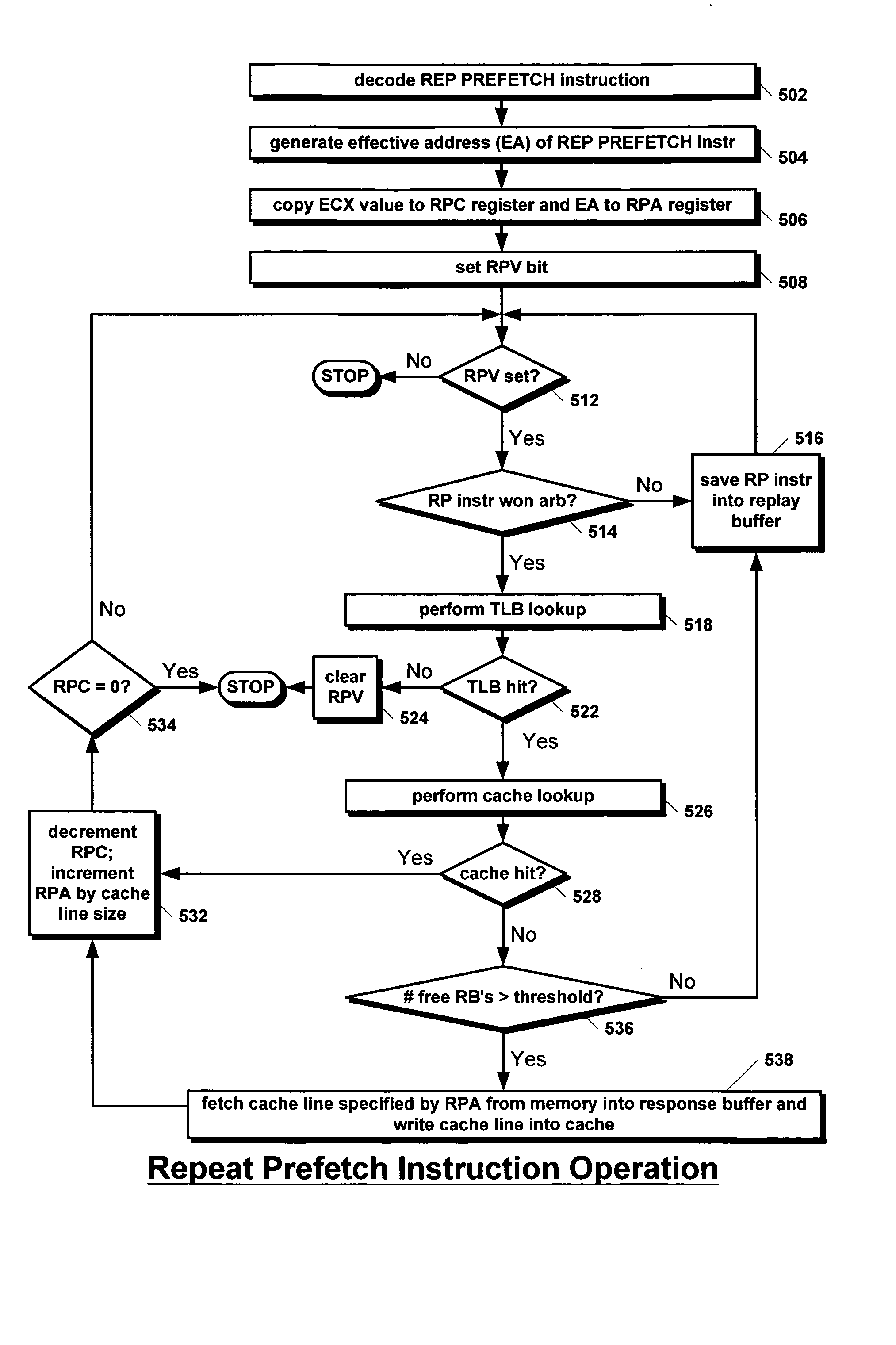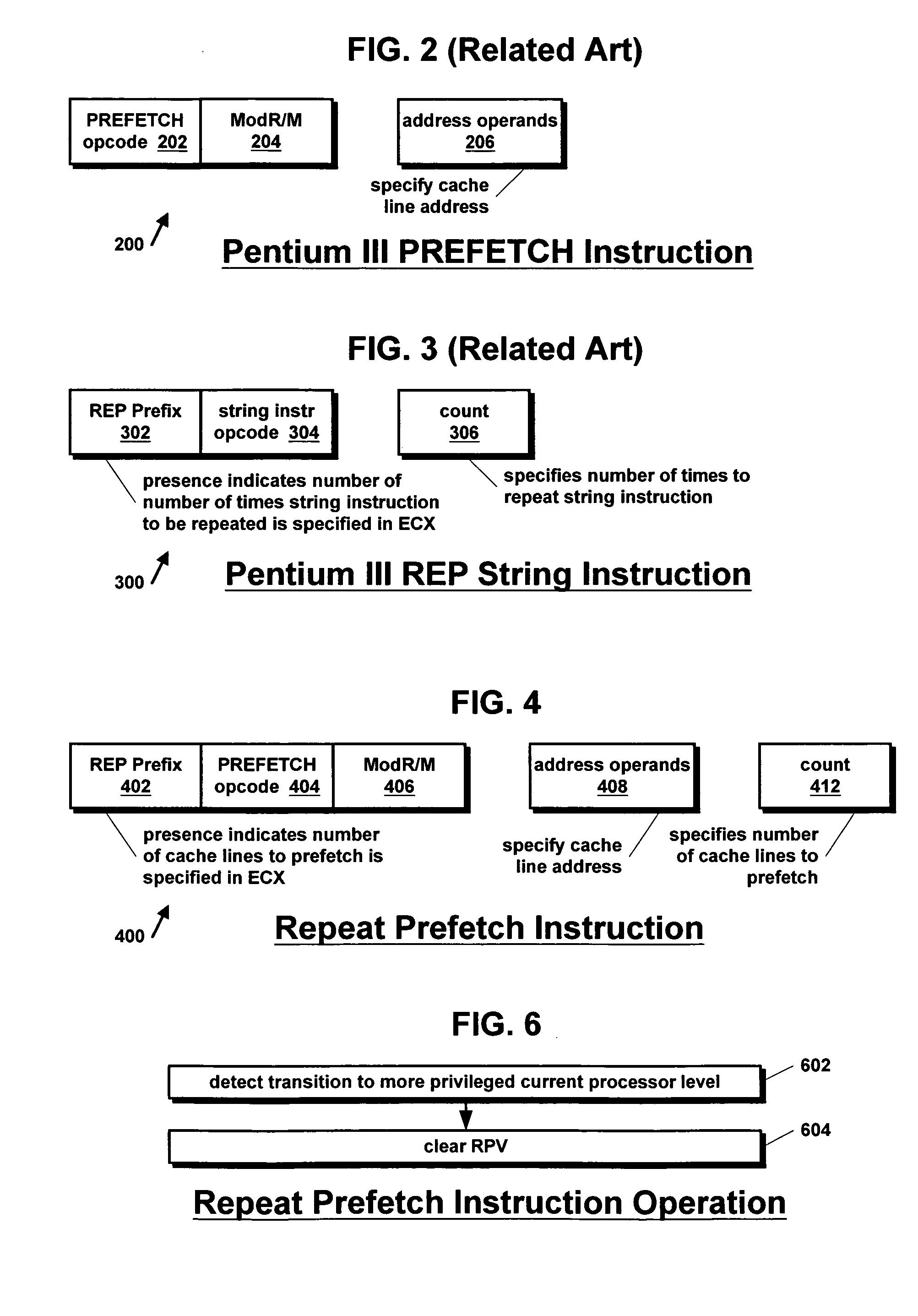Microprocessor with repeat prefetch instruction
a microprocessor and instruction technology, applied in the field of prefetch instructions in microprocessors, can solve the problems of reducing multimedia system performance, inefficient use of processors, and a relatively long time for data fetching, so as to reduce software code size, save x86 opcode space, and execute more efficiently
- Summary
- Abstract
- Description
- Claims
- Application Information
AI Technical Summary
Benefits of technology
Problems solved by technology
Method used
Image
Examples
Embodiment Construction
[0026] Referring now to FIG. 1, a block diagram of a microprocessor 100 according to the present invention is shown. The microprocessor 100 comprises an instruction decoder 102. The instruction decoder 102 receives instruction bytes from an instruction cache (not shown). In one embodiment, the instruction bytes comprise x86 architecture instruction bytes. The instruction decoder 102 decodes the instruction bytes. In particular, the instruction decoder 102 is configured to decode a repeat prefetch instruction according to the present invention, which is described with respect to FIG. 4. Before describing the repeat prefetch instruction of FIG. 4, the Pentium III PREFETCH and REP string instructions will first be described with respect to FIGS. 2 and 3.
[0027] Referring now to FIG. 2, a block diagram of a related art Pentium III PREFETCH instruction 200 is shown. The Pentium III processor instruction set includes a PREFETCH instruction that fetches a cache line of data from system mem...
PUM
 Login to View More
Login to View More Abstract
Description
Claims
Application Information
 Login to View More
Login to View More - R&D
- Intellectual Property
- Life Sciences
- Materials
- Tech Scout
- Unparalleled Data Quality
- Higher Quality Content
- 60% Fewer Hallucinations
Browse by: Latest US Patents, China's latest patents, Technical Efficacy Thesaurus, Application Domain, Technology Topic, Popular Technical Reports.
© 2025 PatSnap. All rights reserved.Legal|Privacy policy|Modern Slavery Act Transparency Statement|Sitemap|About US| Contact US: help@patsnap.com



